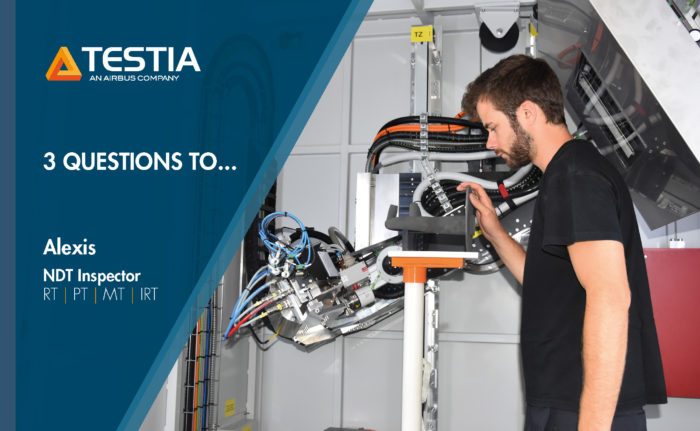
Is NDT a fast evolving job?
NDT is a regulated job which requires a certification renewal every 5 years. This implies taking a refreshers training course and passing an exam, and of course keeping up with the latest industrial updates.
From a workshop point of view, I haven’t seen any changes in Penetrant and Magnetic Testing, and I don’t believe those methods will be subject to major transformations; these are traditional, industrial methods that don’t rely on technology. Radiographic Testing however has been evolving rapidly these past few years, especially with the development of Digital Radiography.
This is almost like a new method in itself so RT technicians have to fully train before being able to operate digital radiography machines. It means developing new skills and adapting to new ways of working.
What is the difference between traditional and digital radiography?
The main difference is that the image of the part can be visualised in live mode with digital radiography. Therefore the acquisition parameters can be optimised in real time and the area to be inspected can be found more easily on complex part geometry developed with ALM technologies.
Moreover, using a complete X-ray digital acquisition system (source + detector + movable sample holder) can offer automatic acquisition of the exposure reducing the acquisition time by a factor of 3 to 4 compared to traditional radiography.
This method has proven very efficient especially on ALM parts which have been more and more used by Aircraft manufacturers. As of today, Testia is the only workshop in France qualified by Airbus on 5 references of Inconel ALM parts. TESTIA is also using this method on power bed fusion and wire-DED parts made from Titanium and Aluminum.
Will digital radiography supersede traditional radiography?
I believe it probably will, but not just yet. As of today, traditional radiography remains the reference and still has a much better quality. It’s like comparing a printed HD photograph to a pixelated picture on screen, the traditional method is prettier and allows to see more details. Hence I believe the technology still has to improve.
When it does reach the quality of traditional radiography however, then it is true it will likely replace the traditional method. Indeed, though it may represent a heavy investment, it allows a lot of time saving in the end and it is more adapted to production rates.
Moreover, digital radiography is much more sustainable in comparison to traditional radiography which is a very pollutant method. This will become more and more strategic in the coming years as the Aerospace industry aims at shifting to more eco-responsible aircraft, which will surely imply adapting our testing methods to new materials and being in-line with Airbus’s environmental concerns.
